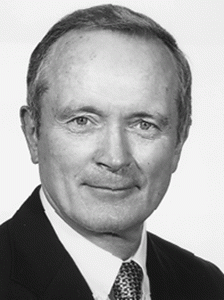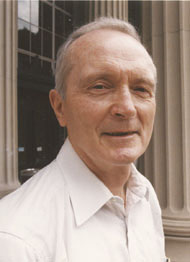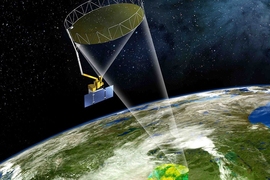MIT Professor Emeritus Peter S. Eagleson, an accomplished and influential hydrologist who helped revolutionize the field, died of natural causes on Jan. 6 at the age of 92.
Eagleson started working at MIT in 1952 and served as the head of the Department of Civil and Environmental Engineering from 1970 to 1975. He was a pioneer in the field of hydrology, transforming it from an engineering specialty with local application into the global-scale study of the water cycle.
His 1970 book, titled “Dynamic Hydrology,” provided a radically new perspective on the movement and storage of water in the environment. The water cycle interface with the climate system and biogeochemical cycles and its interactions with the biosphere were hallmarks of his new vision.
In a series of seven papers under the main title “Climate, Soil, and Vegetation” in a single issue of Water Resources Research — the main journal of the discipline — he demonstrated the potential of this new thinking for solving some of the longstanding disciplinary and interdisciplinary challenges.
In 1991, Eagleson served as committee chair for the National Research Council, which published “Opportunities in the Hydrologic Sciences.” This report recommended a new vision for the field of study that built on his pioneering ideas.
MIT professor of civil and environmental engineering Dara Entekhabi was one of Eagleson’s students and remembers him fondly as a scientist and mentor.
“Peter Eagleson had an enormous impact on hydrology — arguably, he defined modern hydrologic sciences and put into motion the infrastructure to support it,” Entekhabi says. “He was my mentor, one of the few people who welcomed me and then stewarded me to what I am now. I consider him my exemplar for professional and personal conduct.”
Eagleson was born in Philadelphia on Feb. 27, 1928, and spent his childhood growing up in a suburb of the city. He attended Lehigh University, where he received his bachelor’s degree in 1949, before moving on for his master’s in 1952 and doctorate in 1956, both from MIT.
Following his retirement from MIT, Eagleson published two books: “Ecohydrology” in 2002 and “Range and Richness of Vascular Land Plants” in 2009, which ushered in yet another transformation of the discipline by bridging the fields of hydrology and ecology. Eagleson also served as the president of the American Geophysical Union from 1986 to 1988. In 1992, he was honored as the MIT Killian Award lecturer. In 1997, Eagleson was awarded the Stockholm Water Prize.
Eagleson led a rich life outside of the academic world as well. Known as “Pete” to his friends, Eagleson was an avid baseball fan and a classic Red Sox diehard. He was an adoring husband to his wife, Beverly; they traveled together, collected modern art, and attended the Boston Symphony regularly.
Eagleson is survived by his wife, Beverly; brother William; children Helen (Dale), Peter Jr., and Jeffrey (Judy); stepchildren William (Roberta), Robert (Robyn), Nancy, and Cynthia (Glenn); grandchildren Shannon (Joey), Daniel, Kelsey, Amanda, Jeffrey Jr., Jenna, Andre, Sarah, Hugo and Mara; and great grandchildren Elizabeth and Clara. A celebration of Eagleson's life will be held later in 2021.
Gifts in Eagleson’s memory may be made to the Parsons Laboratory Fund.









